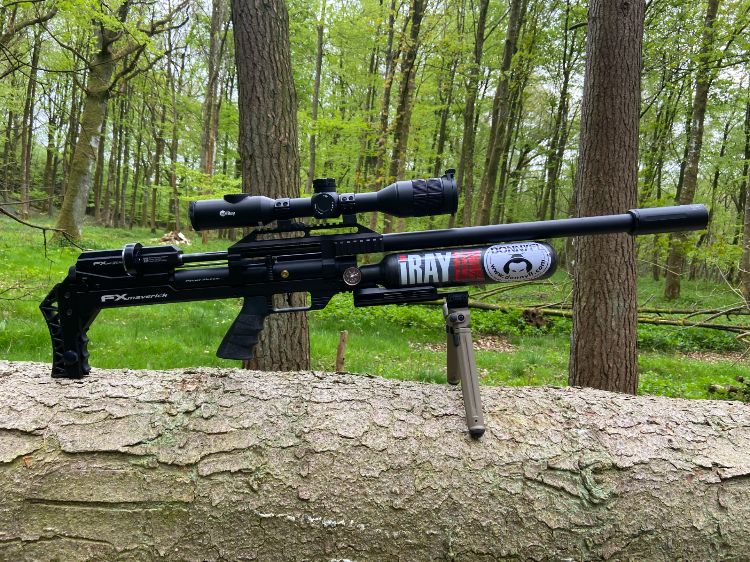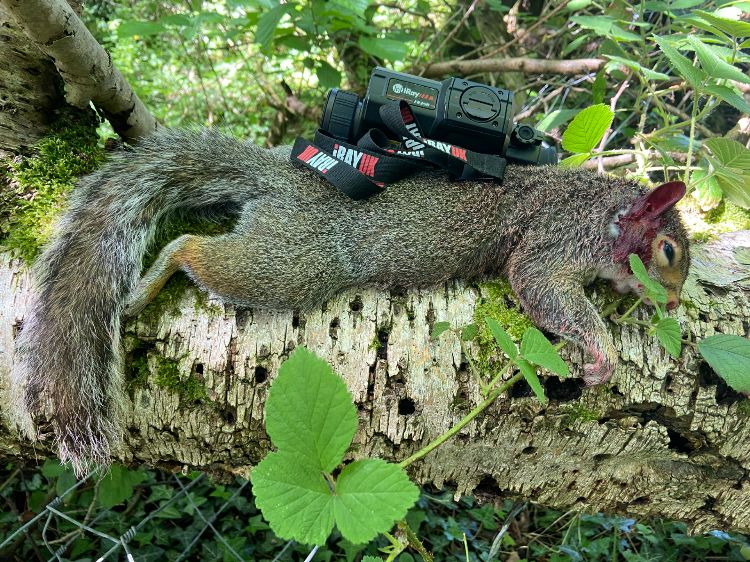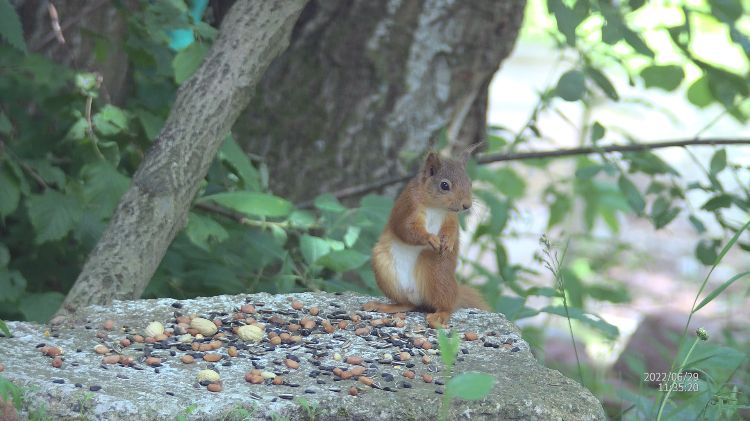It’s the time of year when the grey squirrels are on the move. The youngsters are stretching their wings and starting to make their own way in life, and the adult males are drifting further afield in search of new territory and food. This is the same for the red squirrels, and one of the main targets for these travelling squirrels is usually the garden feeders – either the bird type, or the specific squirrel feeder.
It is of a great concern when a homeowner, who has regular visits from a family of reds, suddenly is confronted by a grey or two, eager to bully their way in and try to force out the resident reds. The public are our eyes and ears in these cases, and the input of sightings is invaluable, as is the reporting of red sightings. It all helps to build up a database of red and grey movements and numbers, which is collated by the numerous conservation groups and helps not just the squirrel ranger, but also the public in general to understand the numbers in clear terms.
My mobile phone has been ringing off the wall recently with reports of sightings in gardens, woodlands and even roads, and keeping up with them all is a task, but a task I relish. It has been said before, but one grey is one grey too many because a single infected grey can be deadly for a whole colony of reds, and it’s for this reason that I accept the non-stop calls with open arms.
 Grey squirrel control - the Method of attack
Grey squirrel control - the Method of attack
The method of attack for this unwanted invasion is two-fold, depending on the requirements of the homeowner and the lie of the land regarding safe shots, backdrops and neighbours. Generally, people are very understanding and accept what the squirrel ranger has to do, but it is of utmost importance to check with all the bordering neighbours and keep them informed of what my activities will be, and assure them that there will be no disturbance for them. I find that once I’ve spoken to them, they will be quite receptive to what needs to be done. People in Cumbria have a great understanding of the plight of the red squirrel and are always happy to assist in whatever way they can, and will offer to report sightings, give you permission to carry out the conservation work in their gardens and any woodlands they own.
Because the sightings can be sporadic, I find it best to set up live traps, again providing the homeowner is happy with it. This will entail giving the garden or woodland an intensive assessment, checking for any rights of way that might be in line with any shots that need to be taken; backdrops, best sites for traps to be located, and any evidence of squirrel activity, such as stripped bark, discarded shells from feed, dreys and actual physical sightings, which all give enough intel to prepare and set up the most appropriate method of attack.
Traps work extremely well and continue to work whilst you are elsewhere, although they shouldn’t be left uninspected for long periods. I tend to check every 6-8 hours, and if the homeowner cannot tend to the traps, I shut them down over night. This means an early start the following day because the greys, and reds, are most active first thing in the morning and last thing before dusk, although on a recent rabbiting session I spotted one with the thermal at 11pm, but this is very rare.
So … ideally, the best scenario is for the homeowner to be involved with the trapping, and most are either texting or calling me to report an activated trap. Trapping a red is something I like to avoid, but when it happens, it gives me a chance to check for any signs of the dreaded squirrel pox, or any other ailments, and if it all looks good, then just as quickly release the little beauty. I have trapped the same red three times in three hours in an area that looked very grey, so it might not be as stressful for them as you’d imagine, but I decided to remove that trap and just top up the feeder as a supplementary feed station with a camera overlooking it … and I am happy to report that my assumption of it being a grey area was wrong. I really was happy about that!
 Case study 1 - grey squirrel chases reds off the feeder
Case study 1 - grey squirrel chases reds off the feeder
My first call of the month was a voicemail from a very distraught lady in quite a remote area – the signal in the Penrith area can be a bit hit and miss, but once I had listened to it, I was on my way. The place was like a chocolate box cottage, beautifully kept with roses growing up the walls and a white picket fence surrounding the property. I was greeted at the gate like one of the emergency services and was thanked profusely for coming so quickly. It’s times like these that really make me feel appreciated for the work I do.
My brother, Richard, was visiting from the USA and I was showing him what the work entailed, but there was more to do here than just squirrel conservation. We had walked the property with the owners and checked the boundary and the adjacent woodland that they owned.
The story was the same; they had a few reds that came to the feeders, but that afternoon a grey had shown up and subsequently chased the reds off. This had distressed them both awfully, but I assured them we would sort it out. A trap was set where the grey had entered the garden and was baited up with monkey nuts, peanuts, sunflower seeds and peanut butter to hold the bait in place. We’d noticed a broken fence on our walk round and we offered to fix it for them because cattle had been getting into the wood, so Richard took care of that whilst I set up the trap. The owners then offered me permission to the wood to carry out more squirrel control … winner!
That evening we were having a barbecue when a call came in. “Mick, there’s a grey squirrel in the trap.” I was off like a shot, picked up the grey and dispatched it appropriately, another satisfied customer.
Case study 2 - grey squirrel invades red territory
The next call was a different scenario, another grey barging into red territory. It had been coming every hour so I was happy to sit out with the FX Maverick until it showed up, but three hours later it was clearly a no show, so once more a trap was set and the owner was happy to check it periodically and then let me know of any activity. Just as the light was creeping into the bedroom, the phoned pinged with the message, ‘We have a grey’.
Thirty minutes later I was parking up and pulling the Maverick from the truck. It was going to be another lovely day; the sun was unshaded and it was already getting near to 20 degrees. The trap was situated around 70 yards from the house and adjacent to the owner’s feeder; the trap door was down, but I could see clearly another sitting on top of the feeder. Stealthily making my way to the patio wall and getting comfortable for the shot was simple, the InfiRay TD50L day/night scope easily picked up the grey in the shade of the tree and within a split second it was on the ground … game over! Both greys were retrieved and I’d reset the trap and left the property silently before the owners rose from their beds.
 Case study 3 - grey squirrel on the bird table
Case study 3 - grey squirrel on the bird table
Callouts number three and four were to houses on the same road. One was from a major landowner in the area and a really lovely lady with whom I have spent many an hour discussing the red squirrel conservation work. A grey had been visiting her bird table and although she had no reds, it still had to be dealt with. A trap was set and within 24 hours a young male grey had been caught.
Case study 4 - grey squirrel chases family of reds away
The fourth caller had a family of reds permanently in their garden, but a grey had shown up and was there on and off throughout the day. Subsequently, the reds had disappeared and the caller even sent me a photo of the invasive critter.
This was going to be a full-on assault with no traps. I picked out a place on one of the patios to set up where I could use my old Idle-back shooting chair, which provides plenty of support – not just for your rifle, but for your back, too – essential if you’re going to be sitting out for a while. The distance was much shorter than the previous place, maybe 25 yards maximum, so I opted for the FX Impact in .177 and sub-12, just to show that I do use non-FAC airguns along with the FACs. I was even provided with a cup of tea and a biscuit!
I sat against the brick wall, trying to look like part of the shrubbery with the help of a couple of conveniently positioned topiary evergreens. It was just a waiting game, and the reds must have got word of what was about to go down because a couple returned to feast on the spilled feed.
The thermal spotter picked out the young grey exiting the woods and scampering along the drystone wall, not stopping until it reached the feeder. It looked tiny in the 3-12 x 50 Airmax eyepiece, but not too small to be a problem. Schwack! and it was game over again, but even before I had chance to sip my tea, an adult male appeared from nowhere, probably along the same route, but unnoticed by me whilst I was concentrating on the youngster.
The plans had worked perfectly – five skinnies taken, and very important ones to have removed. The homeowners were happy, the reds had returned, and the equipment had worked faultlessly – as it always does.